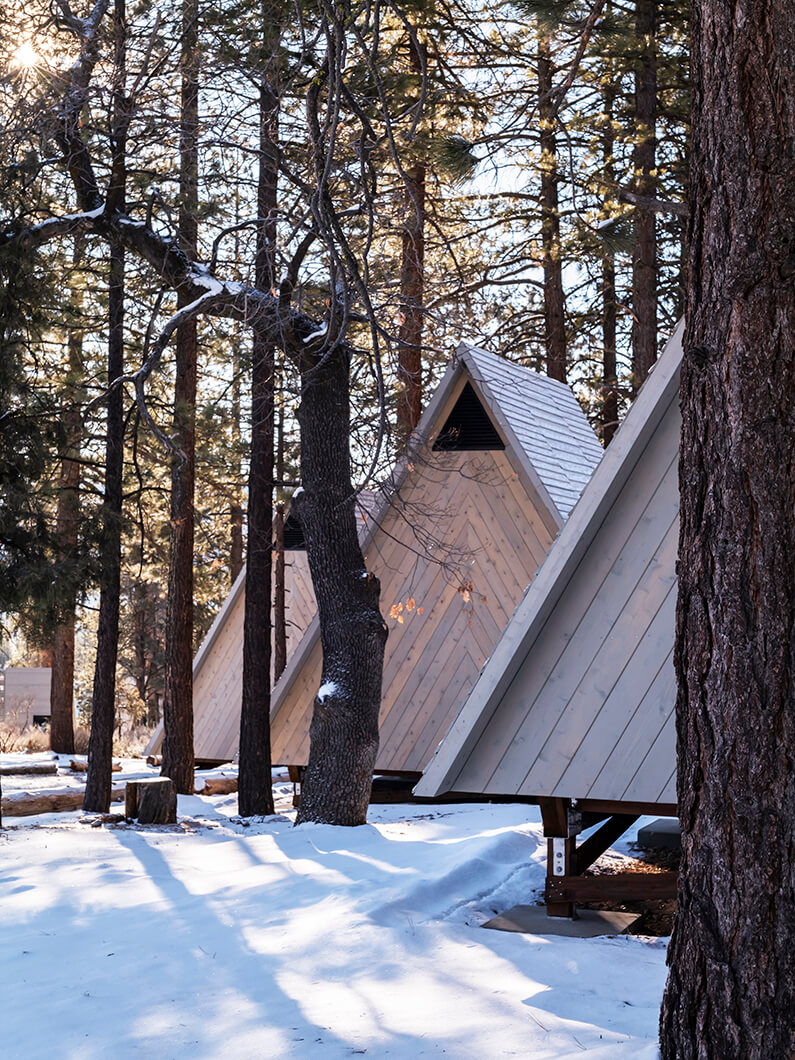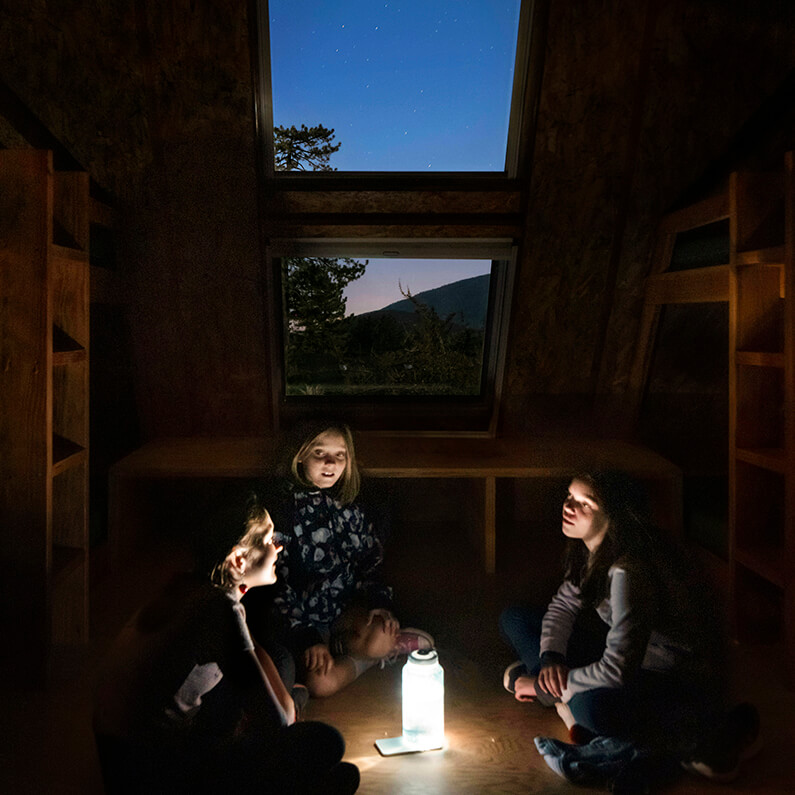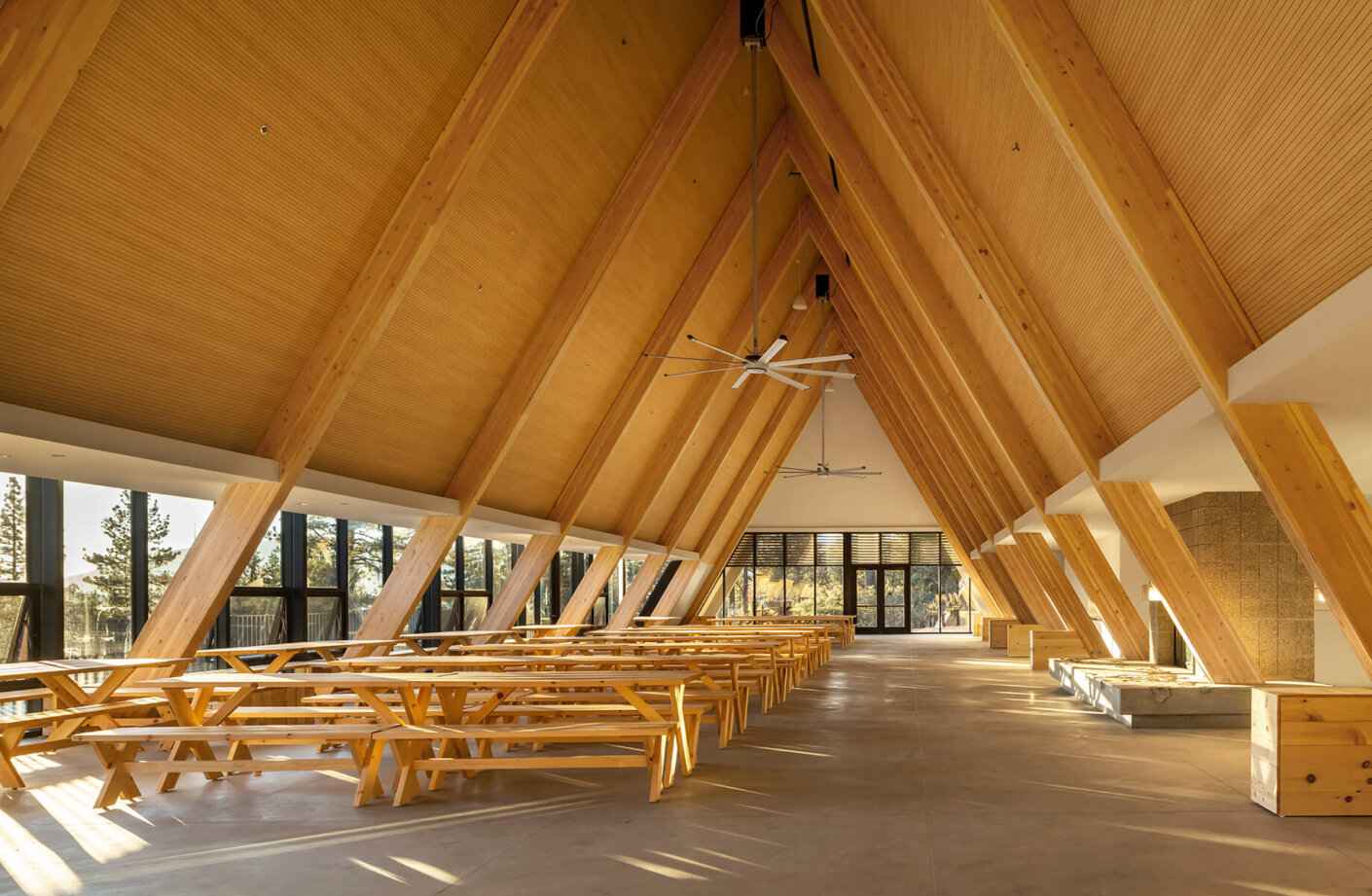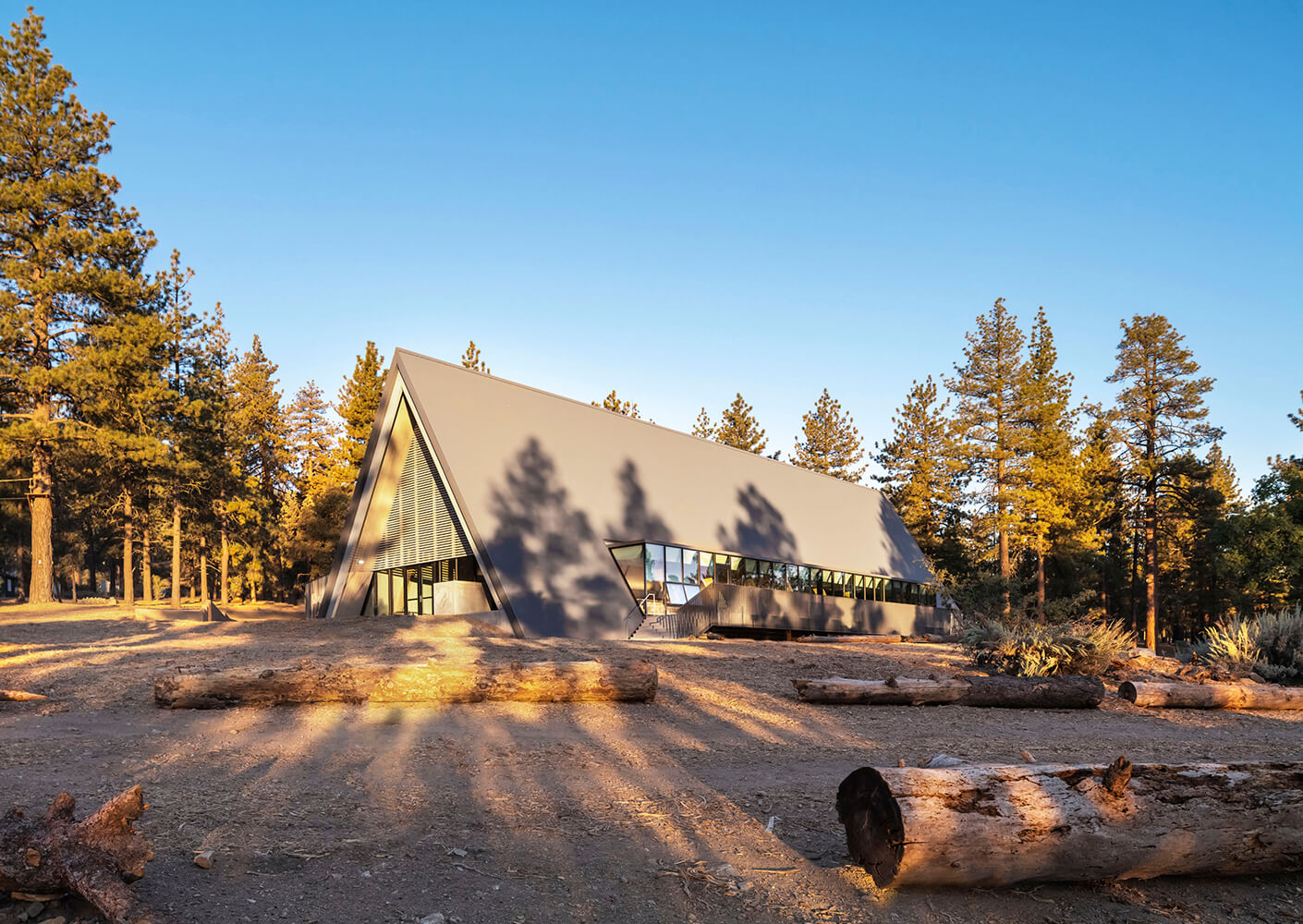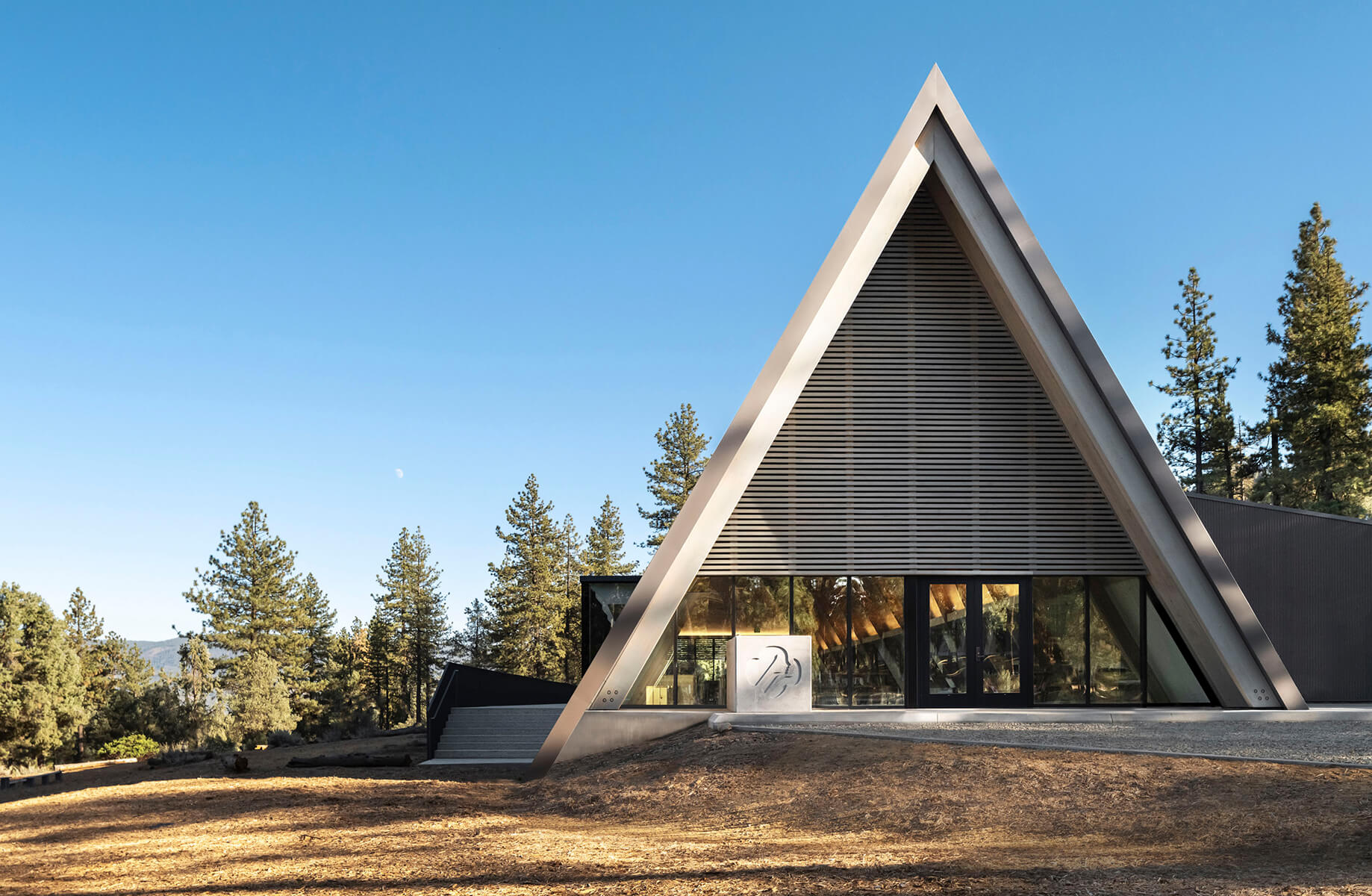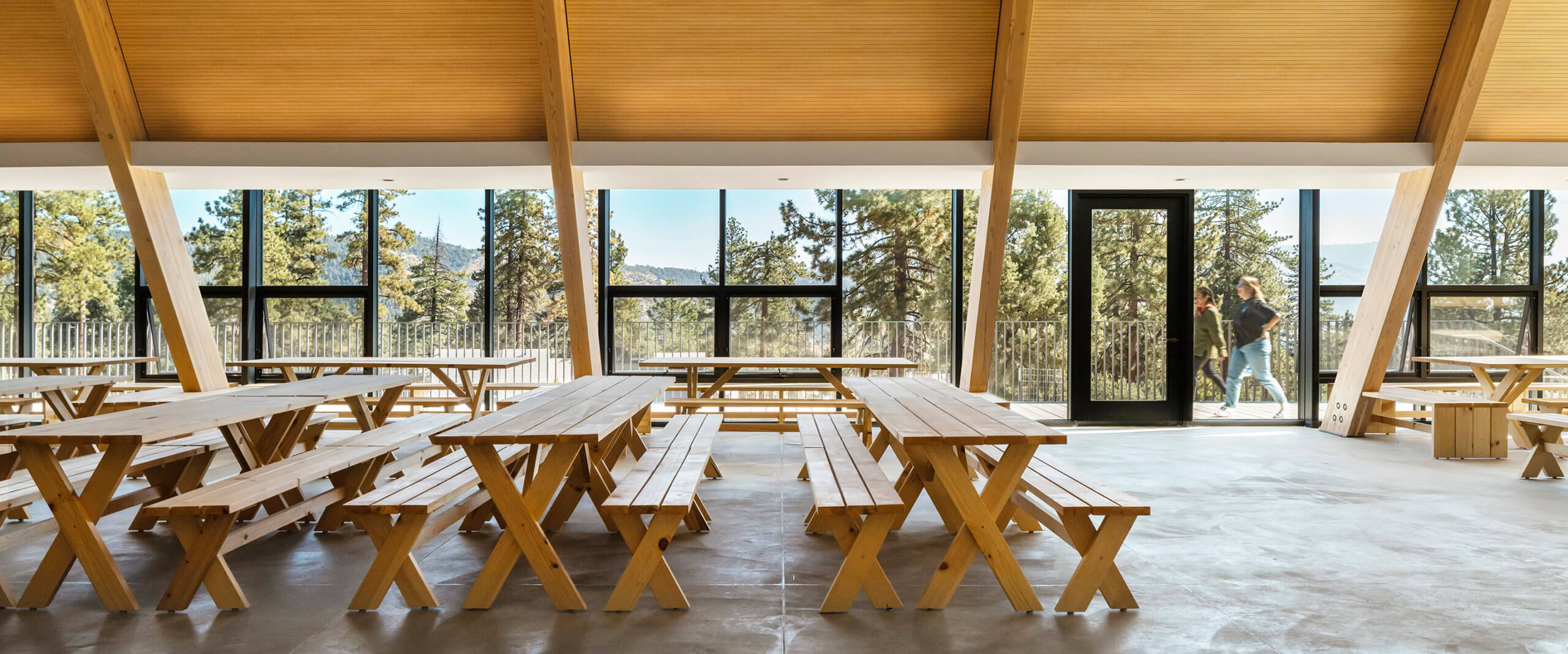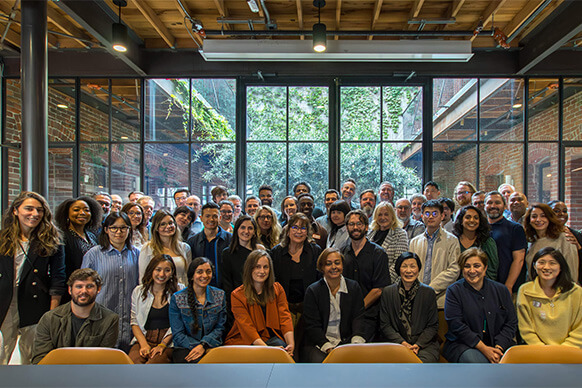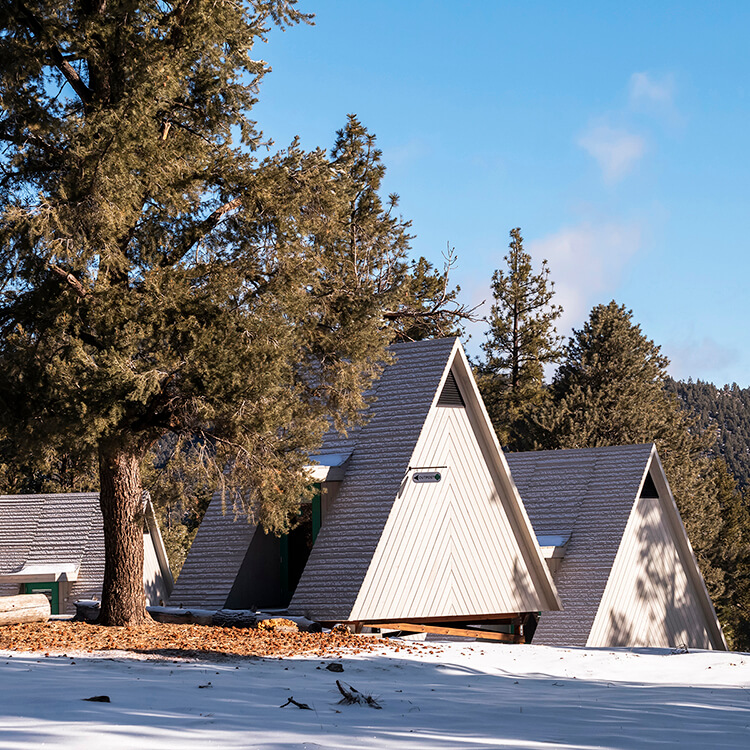
Girl Scout Camp Lakota
In every aspect of its master plan and design, Camp Lakota considers what Girl Scouts of all backgrounds coming from urban Los Angeles will experience and learn. The design’s “rustic comfort” provides a safe base of support from which campers can take risks. The material rawness exposes not only what was constructed but how.
Looking to strike a balance between innovation and tradition, the Girl Scouts modernized this existing campground by adding 24 new insulated sleeping cabins for year-round use. In addition, a new 10,000 SF dining hall replaced the previous building, which was tragically destroyed in a fire several years ago. A relatively large structure in a forest setting, the new dining hall needed to be especially sensitive to both its scale and context.
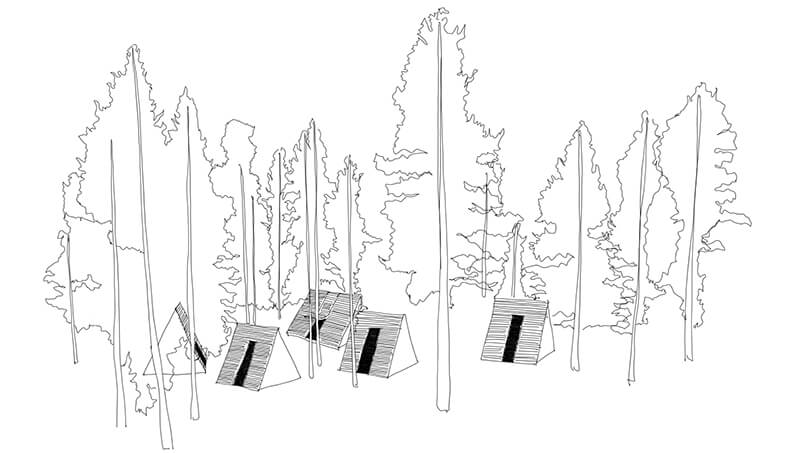
Adding buildings to a sensitive forest ecology was a unique challenge. Scale, form, and material were carefully selected to complement the beauty of the surrounding pine trees and underbrush. Structures are elevated and delicately placed to minimize the removal of trees and reduce disturbance to the flow of water and paths of critters.
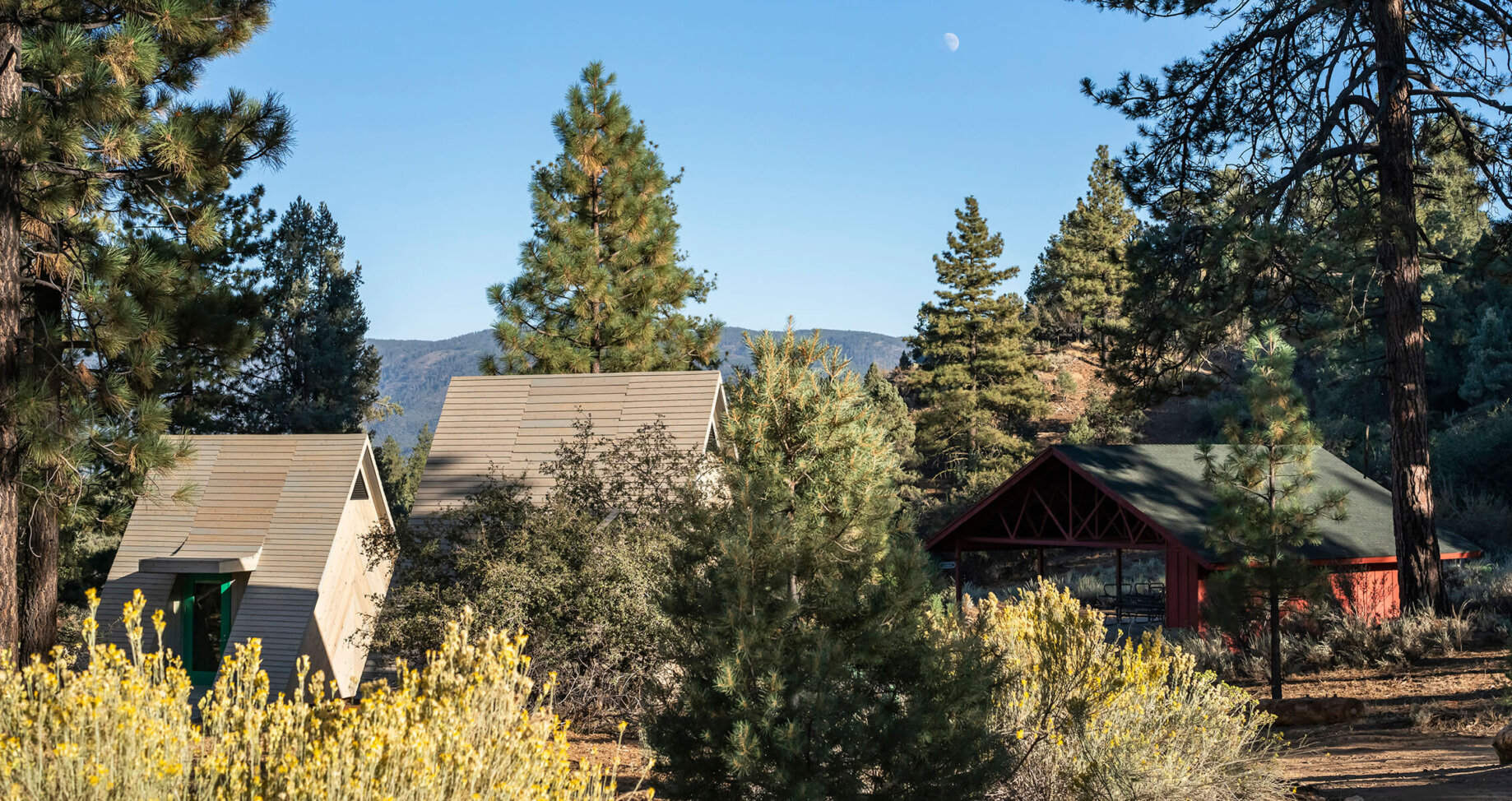
All cabins and restroom buildings use optimally placed operable windows and louvers to passively ventilate the interior spaces. Constructed of Structurally Insulated Panels (SIPs) with high R-value and Mass Plywood Panel floors (MPPs), the cabins are detailed to minimize the thermal breaks that would cause discomfort in extreme temperatures.
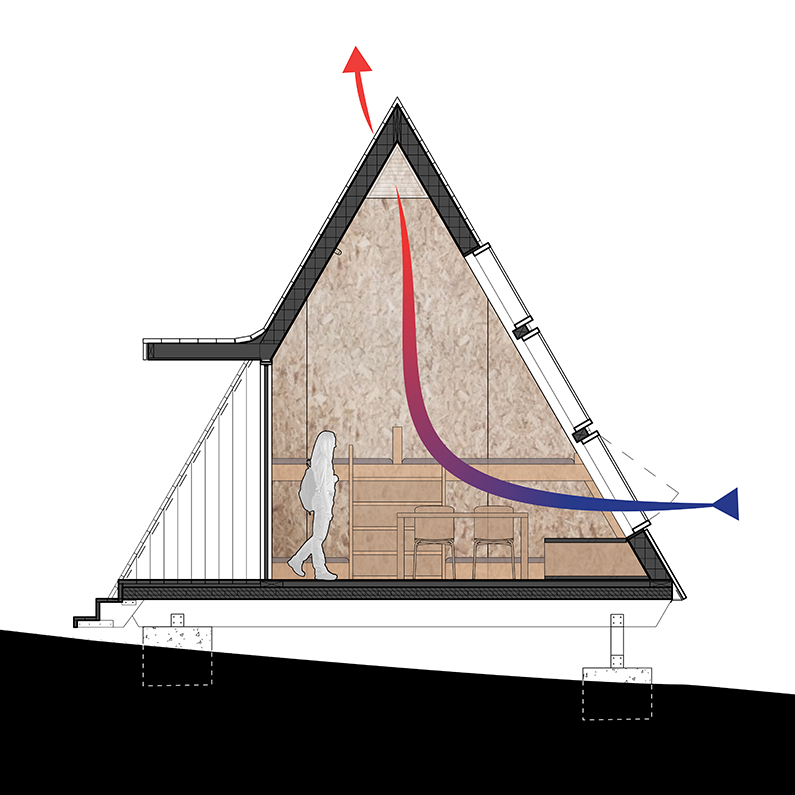
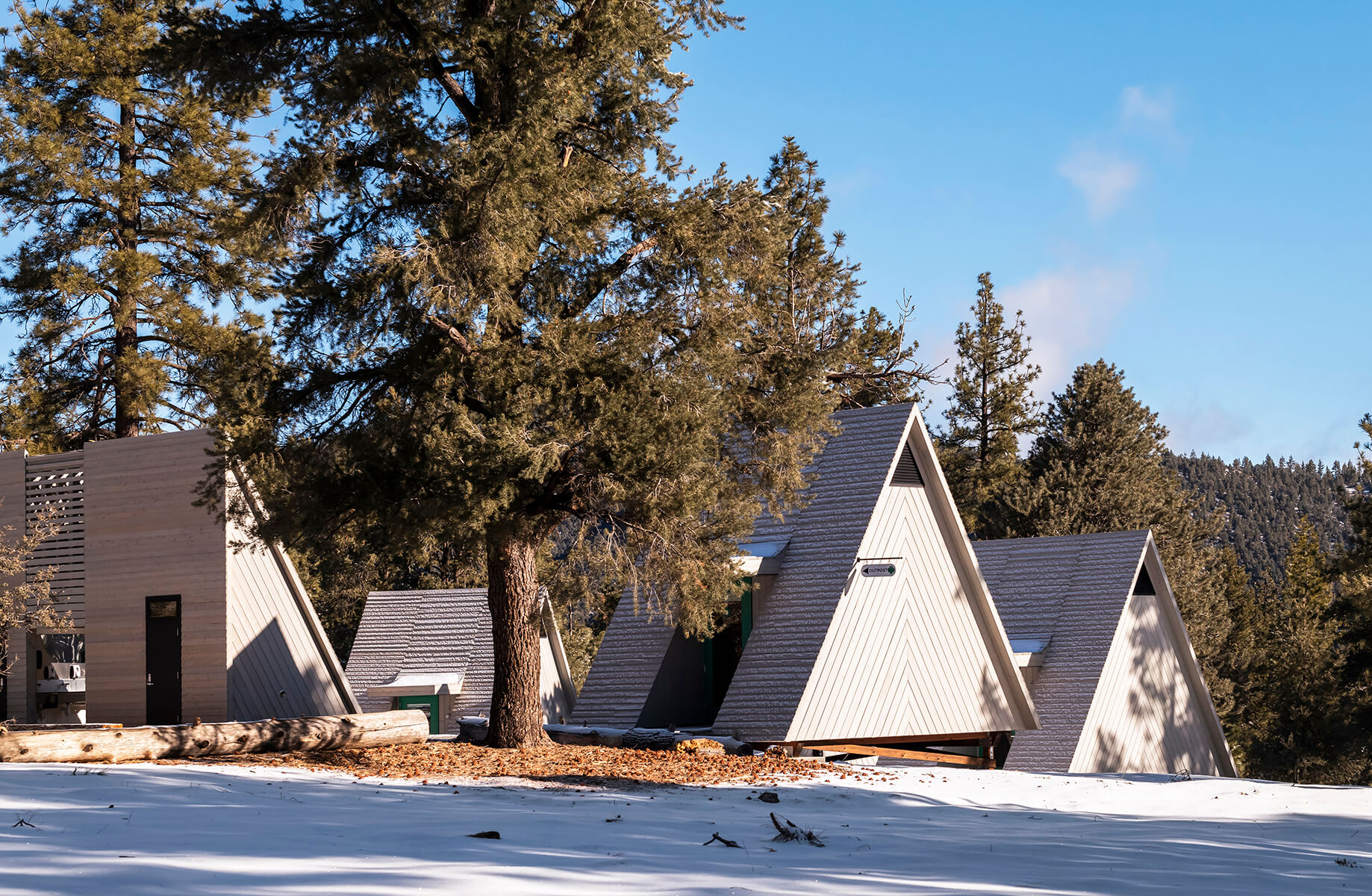
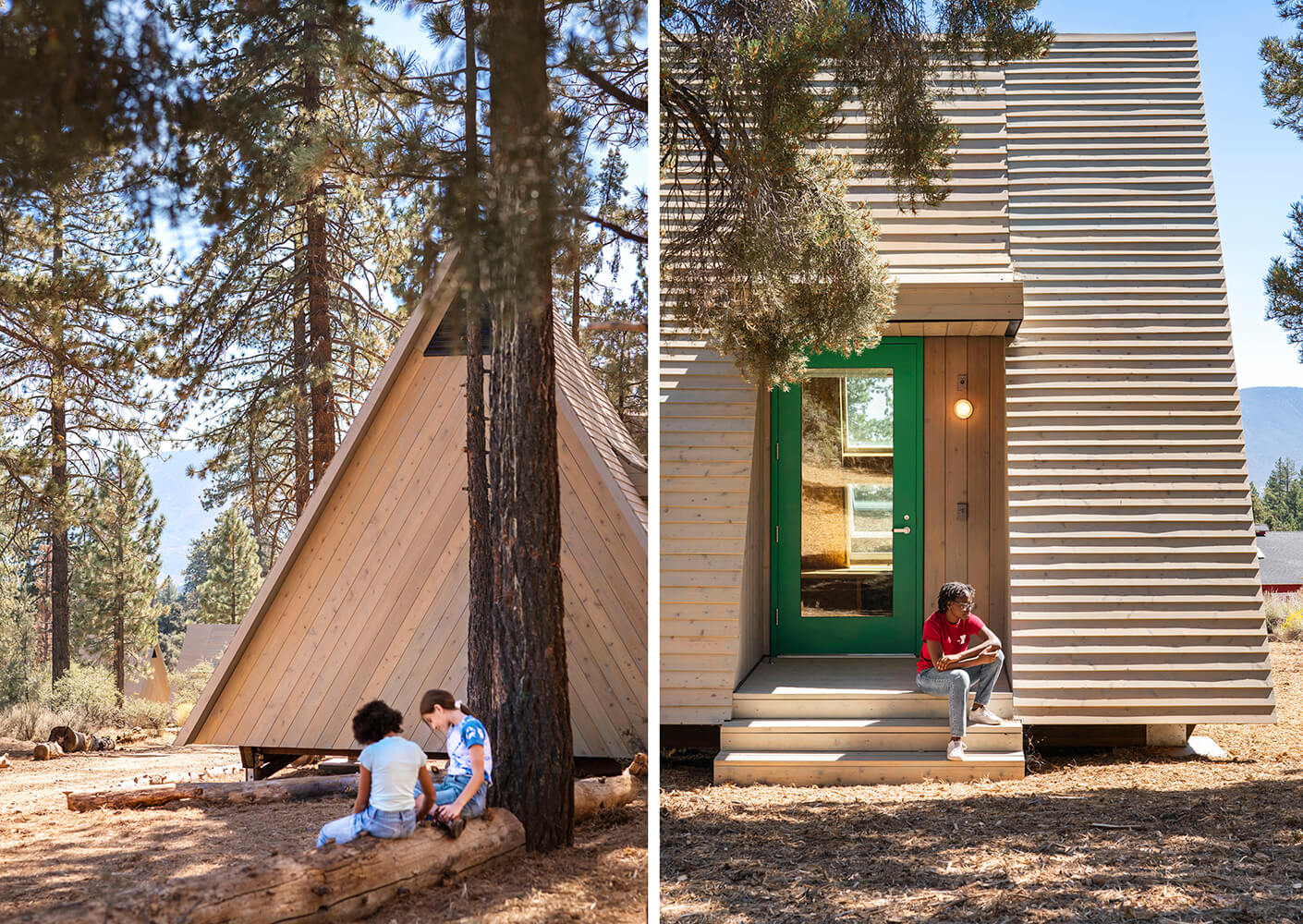
Cabins were prototyped using the flatpack model, combining higher quality shop fabrication with a compact shipping footprint. Prefinished SIPs are detailed to snap together allowing for rapid on-site assembly with standard tools. This approach brings a DIY sensibility to the cabins, which support the campers learning experientially while expressing a tectonic honesty and integrity.
The cabins and dining hall take the A-frame form, a motif with a plurality of relevant and positive associations:
- The simple volume gives a nostalgic nod to the traditional camping tent used by campers of all ages.
- The clustered arrangement of peaks mimics the surrounding pines.
- The profile takes the form of a traditional Lakota tribe tipi.
- The modern sensibility ties to the A-frame’s southern California roots, where RM Schindler built the pioneering Lake Arrowhead “all-roof” home in 1934.
